We walked up the Hobart Rivulet Walk from the city to the Cascades Female Factory, with a lunch stop a little further up the path at the Cascades Brewery. By the end of that, we were grateful for the downhill walk back down the Rivulet Walk to the city centre to collect our car.
Hobart Rivulet Walk
The Hobart Rivulet is a small (or not so small, at times) creek that was the original water source for Hobart city, and the reason why the city is where it is. In the early days of settlement, it was a significant industrial area, with tanneries and water-powered industry using the water supply. Little evidence of that remains today, however, and it is a pleasant walk beside the creek. The flood protection barriers (or more correctly, the debris collection barriers) near the bottom of the walk testify to the fact that at times it isn’t a quiet little stream.
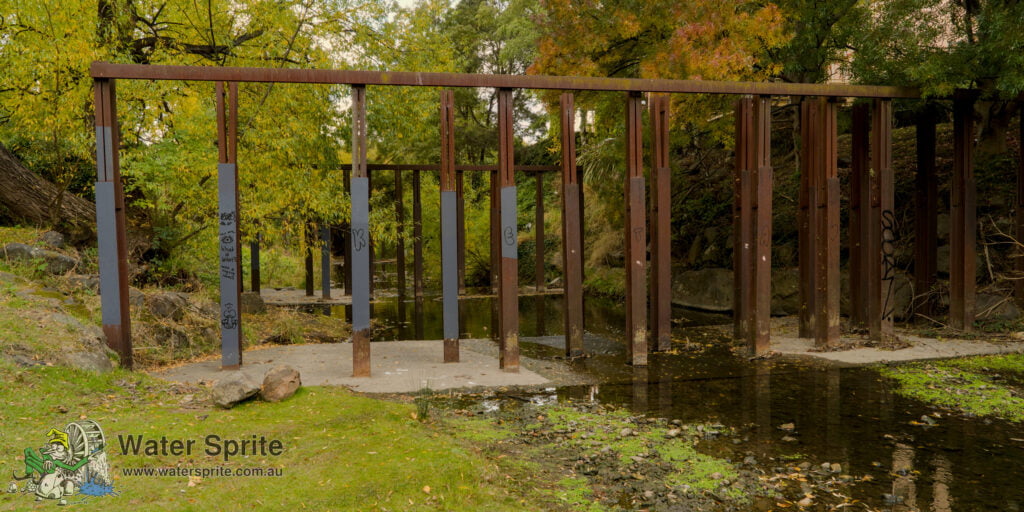
Sony A7Riv with Sony FE 24-70mm F2.8 GM II lens @ 24mm. 1/30s, f/16.0, 800 ISO.
The creek is reported to be the home of a number of platypuses, and during our walk there were reports of a platypus having been seen – however we were not so lucky. The walk is quite pleasant and no too difficult, provided you don’t (as we inadvertently did) take the hillside detour. With the detour it was significantly more effort, although the views through the trees were quite impressive. Too many trees in the way for good photographs, however.
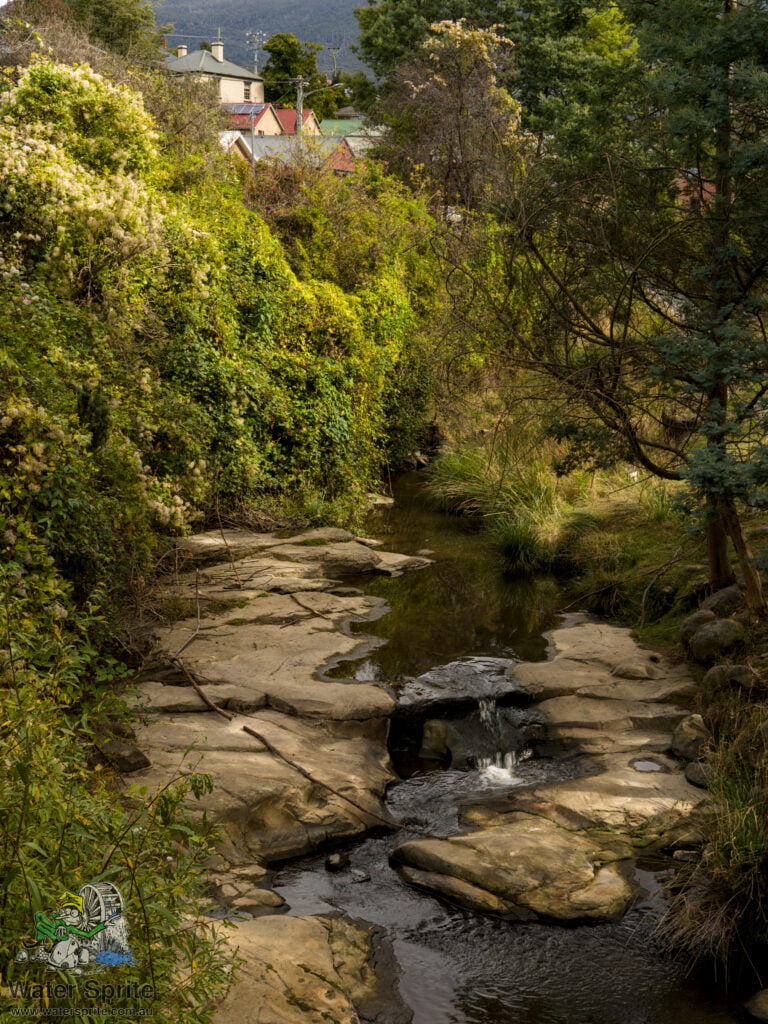
Sony A7Riv with Sony FE 24-70mm F2.8 GM II lens @ 35mm. 1/40s, f/16.0, 250 ISO.
The walk itself
The walk takes you up beside the rivulet, through parklands along the rivulet valley, to the Cascades Female Factory, which was our ultimate destination. You continue on through suburban streets, roughly following the rivulet, for a few hundred metres to end up at the Cascades Park. If you are not with a mad photographer, you can probably do the walk (one way) at a relaxed pace in about an hour. It was a pleasant walk, and my memory says it was mostly shady. Took us significantly more than an hour, but see above comment about mad photographers.





Links
Cascades Brewery
We got to the Female Factory at about lunchtime. There is no food available at the Female Factory, but there is a restaurant at the Cascades Brewery. The Brewery is not visible through the trees if you look further up the valley from outside the Female Factory, but it isn’t much of a walk up the road before you can see it.
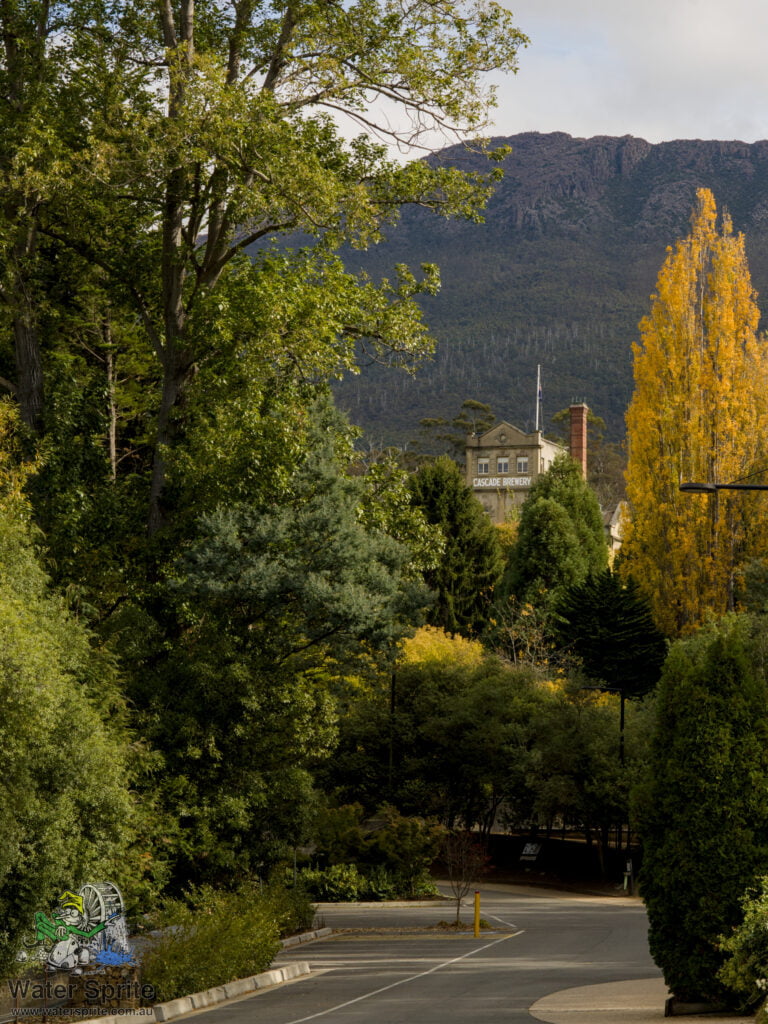
Sony A7Riv with Sony FE 24-70mm F2.8 GM II lens @ 70mm. 1/80s, f/16.0, 200 ISO.
A short walk up the road, a welcome break at some public toilets, a brief meander through a public park, and next thing you know, you’re in the carpark out the front of the historic Brewery building. I wasn’t interested in the brewery itself, and we didn’t do a brewery tour. Maybe another time.
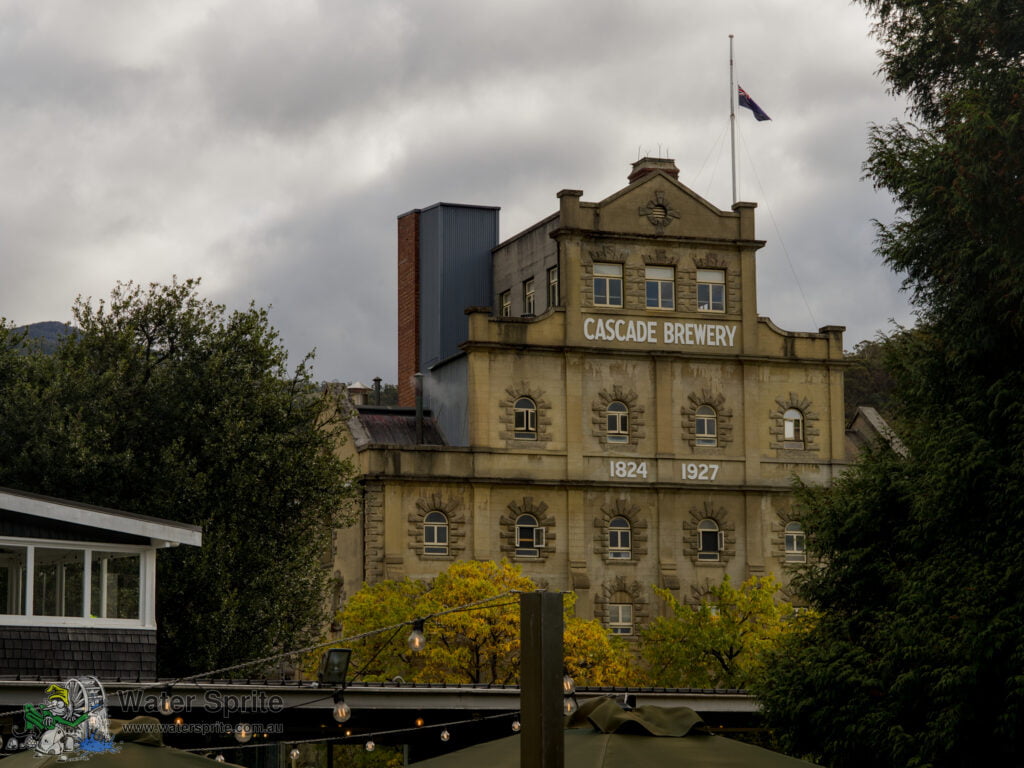
Sony A7Riv with Sony FE 24-70mm F2.8 GM II lens @ 70mm. 1/80s, f/16.0, 125 ISO.
The restaurant is over the road. Big place, with lots of indoor and outdoor seating. Some well maintained (and quite large) gardens that you are welcome to wander around as well. The food was very nice, and not (from what I recall) that expensive in the scheme of things. There were gluten free options and they were marked on the menu.




Cascade Female Factory
The real object of the days excursion ended up being almost a side-note to the journey in some respects. By the time we got there it was early afternoon. We’d been on the move for several hours, and by that point I’d been on the move taking photographs pretty solidly for six days. It is a very moving site, and well worth the visit, but the few photographs I did take don’t really tell the story. To be honest, I’m not sure how to tell the story of this place in photographs.
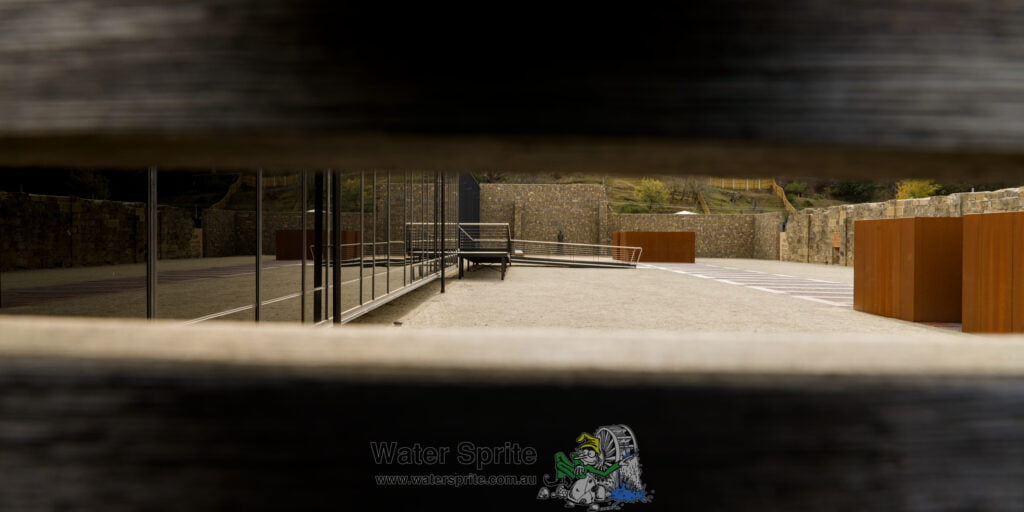
Sony A7Riv with Sony FE 24-70mm F2.8 GM II lens @ 24mm. 1/30s, f/16.0, 125 ISO.
In the post-convict era, much of the building was torn down. All the internal walls and buildings of the five compounds were removed. Many of the external compound walls also didn’t survive, and the the extent that they survived, the external walls were reduced in height. The various compounds served a variety of uses over the years. Except for the Matron’s Cottage – like at Ross, this became a private residence, and survived. The Assistant Matron’s cottage, however, which was behind the Matron’s cottage, was removed. I presume it became the back yard for the surviving cottage.
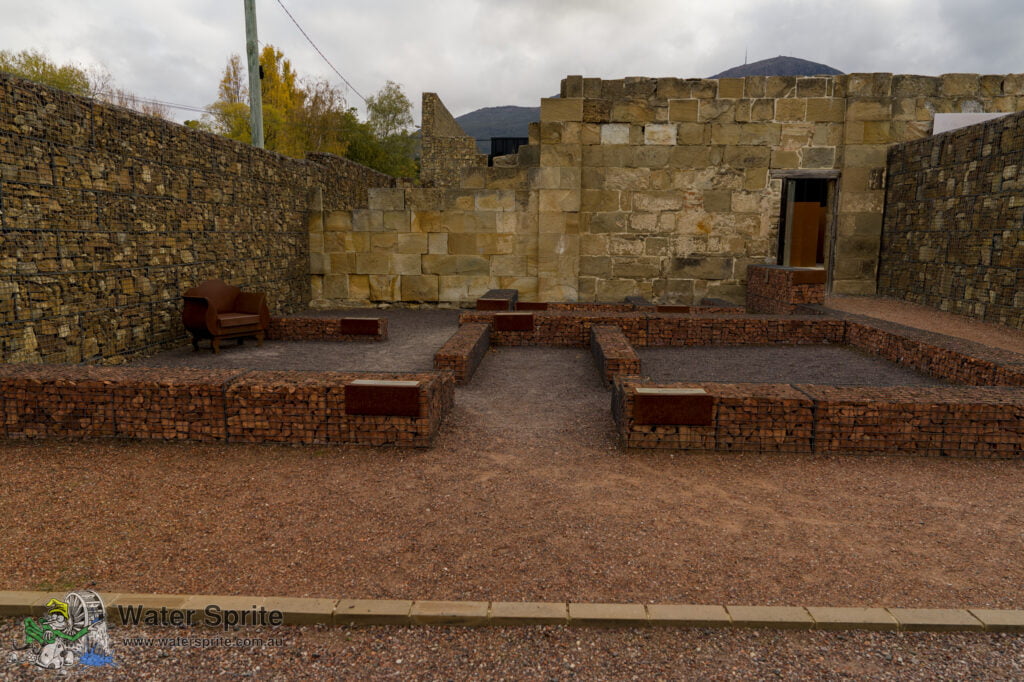
Sony A7Riv with Sony FE 24-70mm F2.8 GM II lens @ 24mm. 1/125s, f/5.6, 100 ISO.
Today
When the site was made into the information and tourist location it is today, gabion walls were put in to show the locations of the original outside walls. Some internal walls are also marked out with low-height gabions, or markings on the ground, to give the feel for the spaces. While it doesn’t really give the feel of the original size of the walls, at least it gives you some idea how the place must have felt.
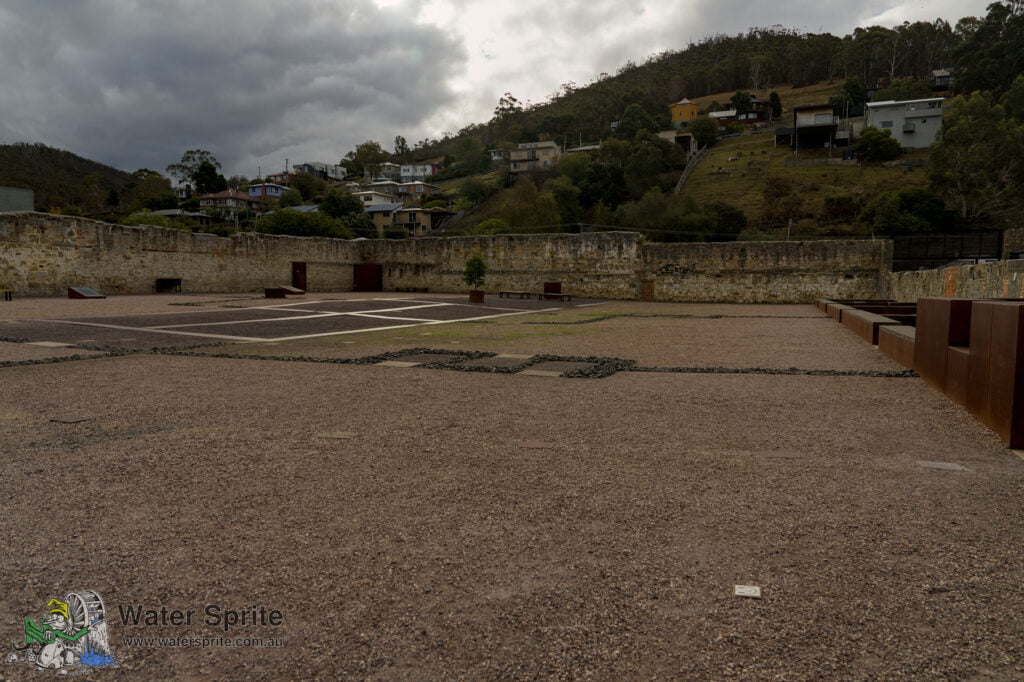
Sony A7Riv with Sony FE 24-70mm F2.8 GM II lens @ 24mm. 1/400s, f/5.6, 100 ISO.
I do find it hard to explain this place. It is simultaneously a moving, frightening and depressing place. A place of punishment for being poor, or just plain being a female at the wrong place and time. Like at Ross (see here), it is also worth remembering that getting pregnant was a crime, regardless of the circumstances in which it occurred. Getting pregnant was invariably the womens fault, in a world where free women were second class citizens and convict women were not even that high. Powerless women, whose rapist was probably not going to be even reprimanded for their actions – unless they were unusually violent – were told they were responsible for men taking advantage of them. Abortion wasn’t an option offered, and many hundreds of babies were born and lived their early years here before being sent out to orphanages (if they survived).
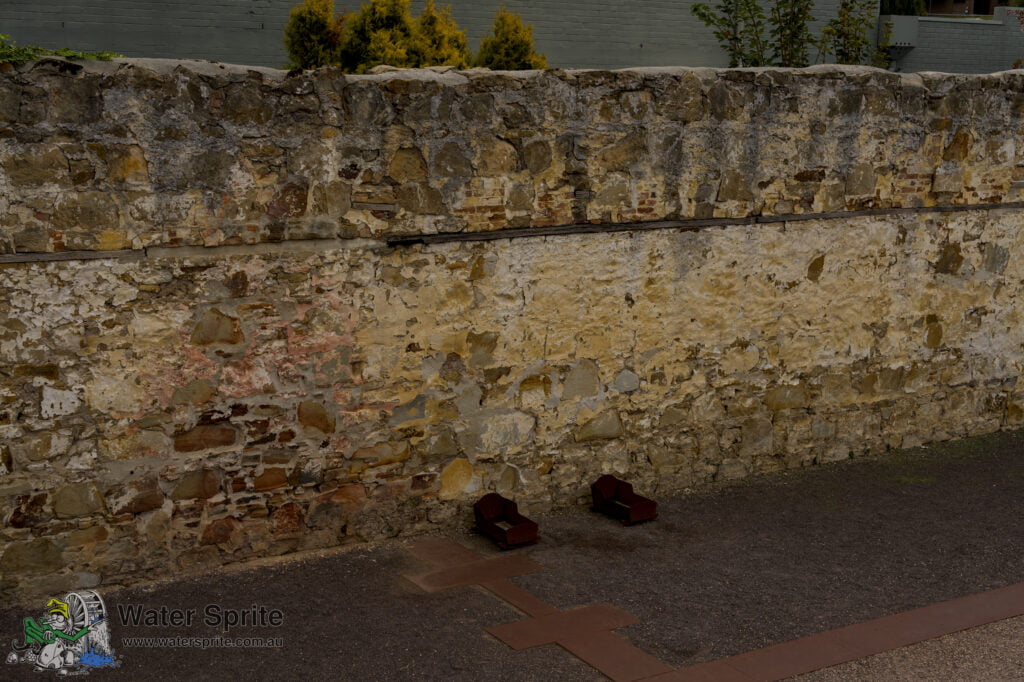
Sony A7Riv with Sony FE 24-70mm F2.8 GM II lens @ 48mm. 1/250s, f/5.6, 100 ISO.


Links
Disclaimer
We visited the Cascades Female Factory as normal unescorted guests. Our hosts were not advised that we are semi-professional photographers or bloggers before or during our visit. It is our understanding that the tours and information we received were as normally provided to any member of the public.
The views expressed in this post are mine and mine alone, and any errors in it are also all mine. Any recommendations made in this post are unpaid and are based entirely on my experiences during my visit. Your experience may differ, and I cannot be responsible for that.
The Port Arthur Historic Site Management Authority, who manage the Cascades Female Factory, do no permit commercial photography at their sites without prior permission. I did enquire about getting permission but the costs were going to be prohibitive given the very slight chance of any sales. They do permit photography for sharing with family and friends and did give permission for me to use my photographs from the sites on this blog. These images are provided for your information and enjoyment only, and are not for sale or other use.
Leave a Reply